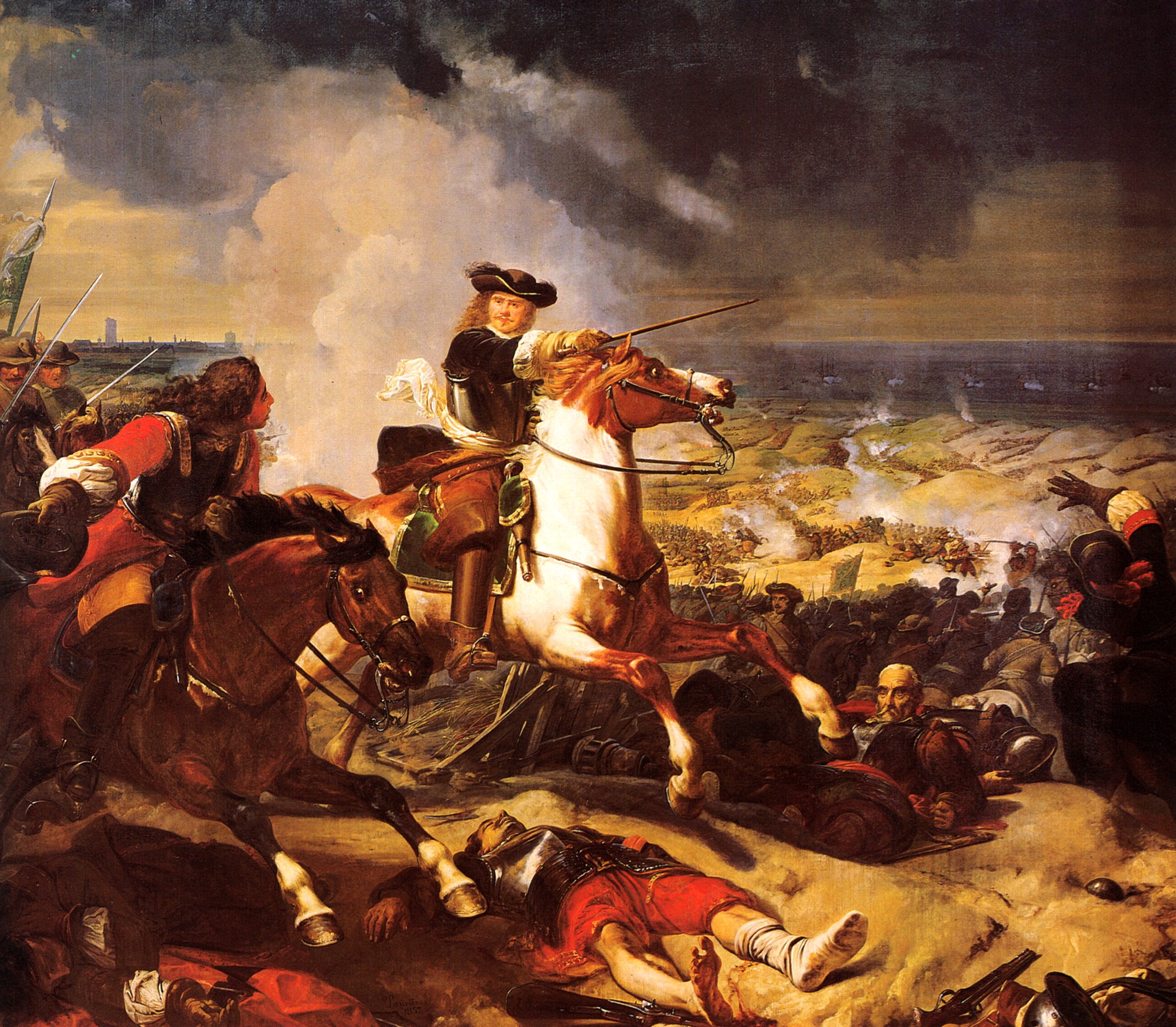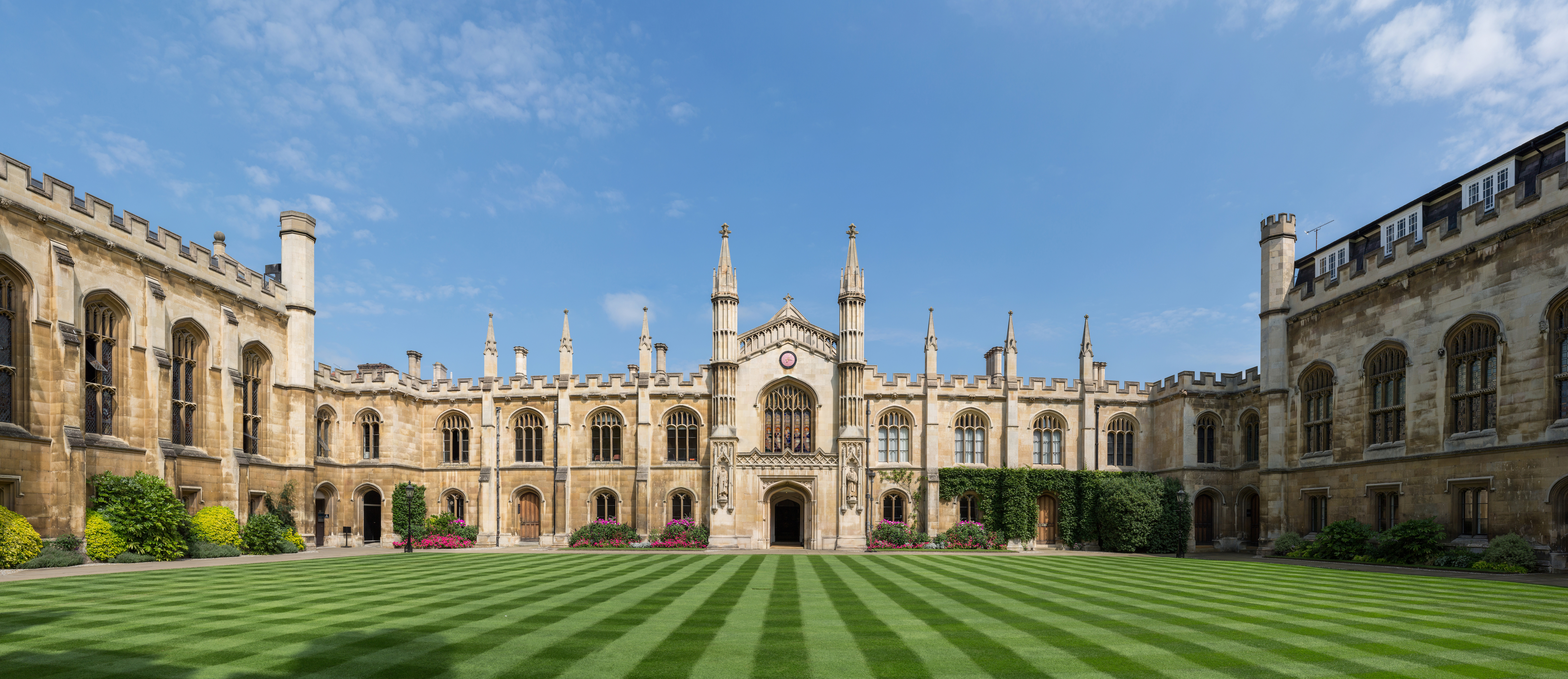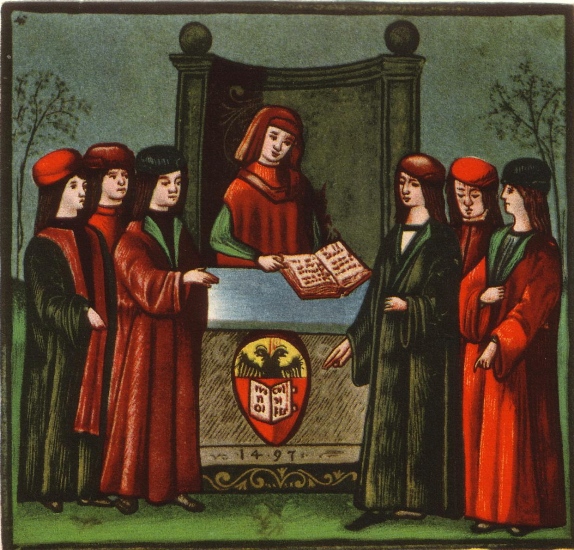|
Marko Gerbec
Marko Gerbec (24 October 1658 – 9 March 1718; Latinized: ) was a Carniolan physician and scientist, notable as the founder of modern medicine among the Slovenes and for the first description of Adams–Stokes syndrome. It was published in 1717 and, 44 years after its publication, it was quoted by Giovanni Battista Morgagni. Early life and education Marko Gerbec was born in Šentvid pri Stični (then part of the Duchy of Carniola, now in Slovenia) to the family of a serf. After graduating from the Jesuit college in Ljubljana (Laibach), he studied with the help of a government scholarship—first philosophy in Laibach (now Ljubljana), then medicine in Vienna. Just a few days before the arrival of the Ottoman Army at Vienna in 1683, he left the city for Padua. He finished his studies in 1684 at Bologna. One of his professors there was Marcello Malpighi. Work and recognitions Gerbec was an internationally recognized physician. In 1688, he became a member of the German '' ... [...More Info...] [...Related Items...] OR: [Wikipedia] [Google] [Baidu] |
Šentvid Pri Stični
Šentvid pri Stični ( or ; german: Sankt Veit''Leksikon občin kraljestev in dežel zastopanih v državnem zboru,'' vol. 6: ''Kranjsko''. 1906. Vienna: C. Kr. Dvorna in Državna Tiskarna, pp. 102–103.) is a settlement in the Municipality of Ivančna Gorica in central Slovenia. The area is part of the historical region of Lower Carniola. The municipality is now included in the Central Slovenia Statistical Region. In addition to the sections of the main settlement known as Stari Trg ( sl, Stari trg) and Zadolžna Vas (), it includes the hamlets of Travnik, Sveti Rok (german: Sankt Rochus), Omotce, Postaja Šentvid, and Marof. Churches The parish church from which the settlement gets its name is dedicated to Saint Vitus ( sl, sveti Vid) and belongs to the Roman Catholic Archdiocese of Ljubljana. It was first mentioned in written documents dating to 1136. A second church on a hill just south of the settlement is dedicated to Saint Roch and dates to the 17th century. Notable people ... [...More Info...] [...Related Items...] OR: [Wikipedia] [Google] [Baidu] |
Battle Of Vienna
The Battle of Vienna; pl, odsiecz wiedeńska, lit=Relief of Vienna or ''bitwa pod Wiedniem''; ota, Beç Ḳalʿası Muḥāṣarası, lit=siege of Beç; tr, İkinci Viyana Kuşatması, lit=second siege of Vienna took place at Kahlenberg Mountain near Vienna on 1683 after the imperial city had been besieged by the Ottoman Empire for two months. The battle was fought by the Holy Roman Empire (led by the Habsburg monarchy and the Polish–Lithuanian Commonwealth, both under the command of King John III Sobieski) against the Ottomans and their vassal and tributary states. The battle marked the first time the Commonwealth and the Holy Roman Empire had cooperated militarily against the Ottomans, and it is often seen as a turning point in history, after which "the Ottoman Turks ceased to be a menace to the Christian world". In the ensuing war that lasted until 1699, the Ottomans lost almost all of Hungary to the Holy Roman Emperor Leopold I. The battle was won by the combine ... [...More Info...] [...Related Items...] OR: [Wikipedia] [Google] [Baidu] |
Carniolan Scientists
Carniola ( sl, Kranjska; , german: Krain; it, Carniola; hu, Krajna) is a historical region that comprised parts of present-day Slovenia. Although as a whole it does not exist anymore, Slovenes living within the former borders of the region still tend to identify with its traditional parts Upper Carniola, Lower Carniola (with the sub-part of White Carniola), and to a lesser degree with Inner Carniola. In 1991, 47% of the population of Slovenia lived within the borders of the former Duchy of Carniola. Overview A state of the Holy Roman Empire in the Austrian Circle and a duchy in the hereditary possession of the Habsburgs, later part of the Austrian Empire and of Austria-Hungary, the region was a crown land from 1849, when it was also subdivided into Upper Carniola, Lower Carniola, and Inner Carniola, until 1918. From the second half of the 13th century, its capital was Ljubljana (Laibach). Previous overlords of Carniola had their seats in Kranj (Krainburg) and Kamnik (Ste ... [...More Info...] [...Related Items...] OR: [Wikipedia] [Google] [Baidu] |
1718 Deaths
Events January – March * January 7 – In India, Sufi rebel leader Shah Inayat Shaheed from Sindh who had led attacks against the Mughal Empire, is beheaded days after being tricked into meeting with the Mughals to discuss peace. * January 17 – Jeremias III reclaims his role as the Ecumenical Patriarch of Constantinople, chief leader within the Eastern Orthodox Church, 16 days after the Metropolitan Cyril IV of Pruoza had engineered an election to become the Patriarch. * February 14 – The reign of Victor Amadeus over the principality of Anhalt-Bernburg (now within the state of Saxony-Anhalt in northeastern Germany) ends after 61 years and 7 months. He had ascended the throne on September 22, 1656. He is succeeded by his son Karl Frederick. * February 21 – Manuel II (Mpanzu a Nimi) becomes the new monarch of the Kingdom of Kongo (located in western Africa at present day Angola) when King Pedro IV (Nusamu a Mvemba) dies after a rei ... [...More Info...] [...Related Items...] OR: [Wikipedia] [Google] [Baidu] |
1658 Births
Events January–March * January 13 – Edward Sexby, who had plotted against Oliver Cromwell, dies in the Tower of London. * January 30 – The " March Across the Belts" (''Tåget över Bält''), Sweden's use of winter weather to send troops across the waters of the Danish straits at a time when winter has turned them to ice, begins. Within 17 days, Sweden's King Karl X Gustav leads troops across the ice belts to capture six of Denmark's islands as Swedish territory. * February 5 – Prince Muhi al-Din Muhammad, one of the sons of India's Mughal, Emperor Shah Jahan, proclaims himself Emperor after Jahan names Muhi's older brother, Dara Shikoh, as regent, and departs from Aurangabad with troops. * February 6 – Swedish troops of Charles X Gustav of Sweden cross The Great Belt in Denmark, over frozen sea. * March 8 (February 26 OS) – The peace between Sweden and Denmark is concluded in Roskilde by the Treaty of Roskilde, under which ... [...More Info...] [...Related Items...] OR: [Wikipedia] [Google] [Baidu] |
Padua, Italy
Padua ( ; it, Padova ; vec, Pàdova) is a city and ''comune'' in Veneto, northern Italy. Padua is on the river Bacchiglione, west of Venice. It is the capital of the province of Padua. It is also the economic and communications hub of the area. Padua's population is 214,000 (). The city is sometimes included, with Venice (Italian ''Venezia'') and Treviso, in the Padua-Treviso-Venice Metropolitan Area (PATREVE) which has a population of around 2,600,000. Padua stands on the Bacchiglione River, west of Venice and southeast of Vicenza. The Brenta River, which once ran through the city, still touches the northern districts. Its agricultural setting is the Venetian Plain (''Pianura Veneta''). To the city's south west lies the Euganaean Hills, praised by Lucan and Martial, Petrarch, Ugo Foscolo, and Shelley. Padua appears twice in the UNESCO World Heritage List: for its Botanical Garden, the most ancient of the world, and the 14th-century Frescoes, situated in differ ... [...More Info...] [...Related Items...] OR: [Wikipedia] [Google] [Baidu] |
College Of Saints Cosmas And Damian
A college (Latin: ''collegium'') is an educational institution or a constituent part of one. A college may be a degree-awarding tertiary educational institution, a part of a collegiate or federal university, an institution offering vocational education, or a secondary school. In most of the world, a college may be a high school or secondary school, a college of further education, a training institution that awards trade qualifications, a higher-education provider that does not have university status (often without its own degree-awarding powers), or a constituent part of a university. In the United States, a college may offer undergraduate programs – either as an independent institution or as the undergraduate program of a university – or it may be a residential college of a university or a community college, referring to (primarily public) higher education institutions that aim to provide affordable and accessible education, usually limited to two-year assoc ... [...More Info...] [...Related Items...] OR: [Wikipedia] [Google] [Baidu] |
Academia Operosorum Labacensium
The ''Academia Operosorum Labacensium'' (Academy of the Industrious Residents of Ljubljana)—a forerunner of the modern Slovenian Academy of Sciences and Arts—was founded in Ljubljana in 1693 as an association of 23 scholars. Most of the members, which included 13 lawyers, six theologians, and four medical doctors, were ethnically Slovene. The newly founded library became an important centre of activity for its members. The ''Operosi'' were very influential in the development of the arts in Ljubljana and throughout the Slovene cultural area. The members of the academy adopted the Latin name ''apes'' (bees) and the academic tag ''Nobis atque aliis – operosi''. Every year they held an annual meeting, as well as four other academic meetings, where they discussed their research. Its purpose from the beginning was to promote scholarship in law, medicine, philosophy, and theology. In 1701, the academy merged with the ''Academia incoltorum'' (Academy of Fine Arts) and ''Academia ph ... [...More Info...] [...Related Items...] OR: [Wikipedia] [Google] [Baidu] |
German Academy Of Sciences Leopoldina
The German National Academy of Sciences Leopoldina (german: link=no, Deutsche Akademie der Naturforscher Leopoldina – Nationale Akademie der Wissenschaften), short Leopoldina, is the national academy of Germany, and is located in Halle (Saale). Founded on 1 January 1652, based on academic models in Italy, it was originally named the ''Academia Naturae Curiosorum'' until 1687 when Emperor Leopold I raised it to an academy and named it after himself. It was since known under the German name ''Deutsche Akademie der Naturforscher Leopoldina'' until 2007, when it was declared to be Germany's National Academy of Sciences. History ' The Leopoldina was founded in the imperial city of Schweinfurt on 1 January 1652 under the Latin name sometimes translated into English as "Academy of the Curious as to Nature." It was founded by four local physicians- Johann Laurentius Bausch, the first president of the society, Johann Michael Fehr, Georg Balthasar Metzger, and Georg Balthasar Wo ... [...More Info...] [...Related Items...] OR: [Wikipedia] [Google] [Baidu] |
Marcello Malpighi
Marcello Malpighi (10 March 1628 – 30 November 1694) was an Italian biologist and physician, who is referred to as the "Founder of microscopical anatomy, histology & Father of physiology and embryology". Malpighi's name is borne by several physiological features related to the biological excretory system, such as the Malpighian corpuscles and Malpighian pyramids of the kidneys and the Malpighian tubule system of insects. The splenic lymphoid nodules are often called the "Malpighian bodies of the spleen" or Malpighian corpuscles. The botanical family Malpighiaceae is also named after him. He was the first person to see capillaries in animals, and he discovered the link between arteries and veins that had eluded William Harvey. Malpighi was one of the earliest people to observe red blood cells under a microscope, after Jan Swammerdam. His treatise ''De polypo cordis'' (1666) was important for understanding blood composition, as well as how blood clots. In it, Malpighi des ... [...More Info...] [...Related Items...] OR: [Wikipedia] [Google] [Baidu] |
University Of Bologna
The University of Bologna ( it, Alma Mater Studiorum – Università di Bologna, UNIBO) is a public research university in Bologna, Italy. Founded in 1088 by an organised guild of students (''studiorum''), it is the oldest university in continuous operation in the world, and the first degree-awarding institution of higher learning. At its foundation, the word ''universitas'' was first coined.Hunt Janin: "The university in medieval life, 1179–1499", McFarland, 2008, , p. 55f.de Ridder-Symoens, Hilde''A History of the University in Europe: Volume 1, Universities in the Middle Ages'' Cambridge University Press, 1992, , pp. 47–55 With over 90,000 students, it is the second largest university in Italy after La Sapienza in Rome. It was the first place of study to use the term ''universitas'' for the corporations of students and masters, which came to define the institution (especially its law school) located in Bologna. The university's emblem carries the motto, ''Alma Mater Studio ... [...More Info...] [...Related Items...] OR: [Wikipedia] [Google] [Baidu] |








